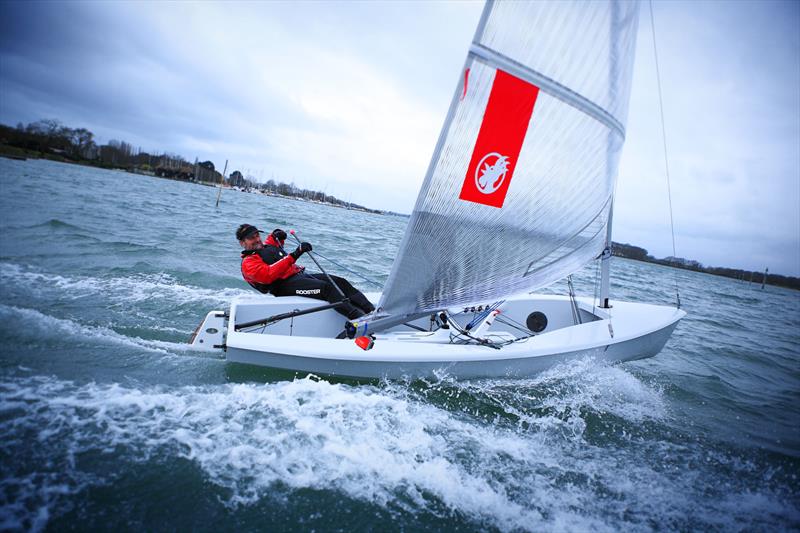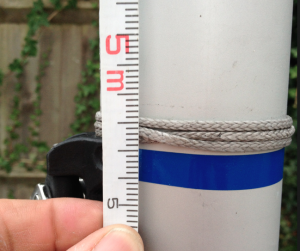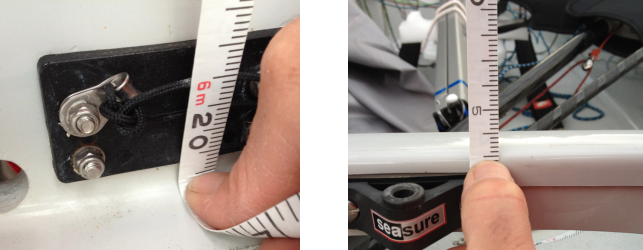
Rooster MXL Loadpath Solo Sail – Set Up Guide
by Stephen Cockerill, Rooster Sailing 4 Sep 2014 16:18 BST
4 September 2014

Rooster MXL Loadpath Solo Sail © Rooster Sailing
The Rooster Solo load path mainsail proved itself to be a hit this season. I tampered with forestay tensions to ensure I had good speed to windward, despite not being the biggest or the fittest on the Solo scene, I thought that the Rooster Loadpath Solo sail was excellent.
My honest approach to rig set up was that I was keen to have one rig set up for all conditions with relatively slack shrouds to give me the possibility to take a lower course downwind than the norm. This slacker shroud set up also gave me a lovely 'give-take' feeling when sailing in chop at Brightlingsea. Give take is my way of describing how the mast takes up that load as it goes up a wave and then gives back as it unloads down the wave.
I did not ever measure my rig until the very end of the Nationals Campaign so here was my final fastest setup (check your tape first):

So pulling the halyard to the point where the tape reads 5m 3cm – to the top of the black band.
The tension in my shrouds were set up to be tight as the mast hit the front of the mast hole and the forestay was tight when it hit the back of the mast hole. I opted for 2.5mm wire as a significant weight saving measure. I also thought that the 2.5mm forestay might stretch just when I need it to in stronger winds to add a little more rake.
I measured the rake in two ways: Firstly measured from the now fixed halyard position to the inside corner of the transom it should read 6m 22cm on a Beer Boat (left-hand image):

Alternatively my rake also measured 5m 97cm to the top of the transom bar next to the gudgeon (right-hand photo).
All measurements were done with no chocks in a D+ mast (sleeved no cut away – as used by me at the Solo Nationals 2014).
With the set up as described above, I found myself needing the chocks fully in (in front of the mast) when starting to hike. I took half a chock out in the drifting conditions, but always felt I needed full chocks in any other conditions. The forestay tension controls the prebend of the rig. Keeping the mast chocked tends to ensure the mast bend is set to that given by the forestay tension.
Initially during this season I used the load path sail with a Zeta mast. I tended to use the traveller to hold the leech that was prone to open upwind with the Zeta. The rig was very manageable, however, I always suffered downwind unless I was able to use waves. When I started to use the D+ sleeved I found that I was always using the kicker to control the leech upwind. In the 6-8 knot region I would use a little Cunningham to help open the upper leech with some kicker to take out the luff curve. I was always conscious that I should not kill the leech tell tails when looking for power and then once starting to get over powered, I would again start to use Cunningham.
Our sail is designed with slightly more return in the leech than the North, but similar to the P&B. The North has a very clean exit, but this tends to make it fast and low, whereas the Rooster can give you both high and low options. The one advantage of the North is that it is hard to over kicker. Whereas the Rooster requires an element of kicker control off wind to ensure the leech is working and not choking.
I would suggest that I was very very quick to windward at Brightlingsea. Off-wind I never took the mainsheet from the boom on principle and so suffered occasionally, but my upwind pace was spot on once I had set the forestay tension tight enough (races 7, 9 and 10 was my purple patch getting scores of 2,1,2).
Please ask me questions about rigs and the set up of the Rooster Loadpath Sail. Just call the Rooster Hotline (01243 389997) and press for 'technical' and ask to speak to Steve Cockerill.